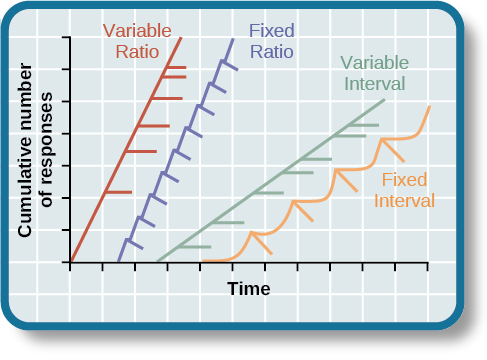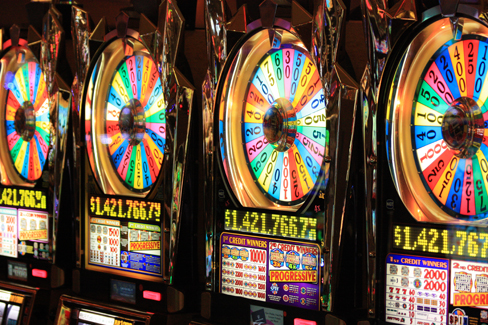| << Chapter < Page | Chapter >> Page > |

Skinner (1953) stated, “If the gambling establishment cannot persuade a patron to turn over money with no return, it may achieve the same effect by returning part of the patron's money on a variable-ratio schedule” (p. 397).
Skinner uses gambling as an example of the power and effectiveness of conditioning behavior based on a variable ratio reinforcement schedule. In fact, Skinner was so confident in his knowledge of gambling addiction that he even claimed he could turn a pigeon into a pathological gambler (“Skinner’s Utopia,” 1971). Beyond the power of variable ratio reinforcement, gambling seems to work on the brain in the same way as some addictive drugs. The Illinois Institute for Addiction Recovery (n.d.) reports evidence suggesting that pathological gambling is an addiction similar to a chemical addiction ( [link] ). Specifically, gambling may activate the reward centers of the brain, much like cocaine does. Research has shown that some pathological gamblers have lower levels of the neurotransmitter (brain chemical) known as norepinephrine than do normal gamblers (Roy, et al., 1988). According to a study conducted by Alec Roy and colleagues, norepinephrine is secreted when a person feels stress, arousal, or thrill; pathological gamblers use gambling to increase their levels of this neurotransmitter. Another researcher, neuroscientist Hans Breiter, has done extensive research on gambling and its effects on the brain. Breiter (as cited in Franzen, 2001) reports that “Monetary reward in a gambling-like experiment produces brain activation very similar to that observed in a cocaine addict receiving an infusion of cocaine” (para. 1). Deficiencies in serotonin (another neurotransmitter) might also contribute to compulsive behavior, including a gambling addiction.
It may be that pathological gamblers’ brains are different than those of other people, and perhaps this difference may somehow have led to their gambling addiction, as these studies seem to suggest. However, it is very difficult to ascertain the cause because it is impossible to conduct a true experiment (it would be unethical to try to turn randomly assigned participants into problem gamblers). Therefore, it may be that causation actually moves in the opposite direction—perhaps the act of gambling somehow changes neurotransmitter levels in some gamblers’ brains. It also is possible that some overlooked factor, or confounding variable, played a role in both the gambling addiction and the differences in brain chemistry.


Notification Switch
Would you like to follow the 'Psychology' conversation and receive update notifications?